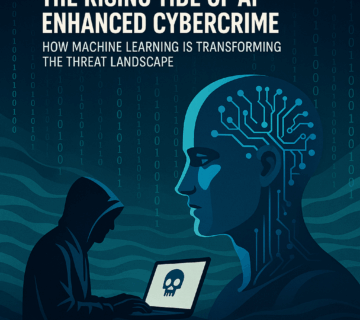Anthropic’s New Security System: Can It Stop AI Jailbreaks for Good?
🎙️ Dive Deeper with Our Podcast!
Explore the latest Anthropic’s New Security System: Can It Stop AI Jailbreaks for Good? Now with in-depth analysis.
👉 Listen to the Episode: https://technijian.com/podcast/anthropics-constitutional-classifiers-a-new-approach-to-ai-security/
Subscribe: Youtube | Spotify | Amazon
Anthropic, one of OpenAI’s biggest competitors, has unveiled a groundbreaking security measure aimed at reducing AI jailbreaks. Dubbed “constitutional classifiers,” this new technique claims to drastically lower the success rate of adversarial prompts that attempt to bypass AI safeguards.
With AI-generated content facing increasing scrutiny, particularly concerning the potential misuse of language models for harmful purposes, this innovation could be a game-changer. But how effective is it really? Let’s explore what this new system entails and how it might impact the future of AI security.
What Are Constitutional Classifiers?
Constitutional classifiers are a new approach developed by Anthropic to instill a set of predefined values (a “constitution”) into their AI models. The goal is to prevent the model from generating harmful or restricted content, even when exposed to sophisticated jailbreak techniques.
How Do Constitutional Classifiers Work?
Unlike traditional guardrails that simply block certain keywords or phrases, constitutional classifiers work by embedding ethical guidelines directly into the AI’s reasoning process. This allows the model to evaluate requests based on a structured set of moral and safety principles rather than relying solely on external filters.
Why Is This Important?
AI jailbreaks—attempts to bypass content restrictions—are a persistent challenge for developers. These exploits can be used to generate content related to illegal activities, misinformation, or even security threats. By using constitutional classifiers, Anthropic aims to significantly reduce the risk of these jailbreaks succeeding.
Effectiveness of Anthropic’s New Security System
A recent academic paper from Anthropic’s Safeguards Research Team reported an 81.6% reduction in successful jailbreaks when constitutional classifiers were implemented in Claude 3.5 Sonnet, their latest AI model.
Key Findings From the Study:
- Minimal Performance Impact – The security upgrade resulted in only a 0.38% increase in refusals for legitimate requests.
- Increased Resistance to Jailbreaks – Standard jailbreak techniques, such as “many-shot” attacks (framing prompts as lengthy conversations) and “God-mode” exploits (using leetspeak or disguised language), were largely ineffective against this new defense.
- Challenges Remain – Some jailbreaks still worked by exploiting loopholes, such as rewording dangerous content in benign ways.
While the system is far from perfect, it represents a significant step forward in AI security.
Why AI Jailbreak Prevention Matters
The Rising Threat of AI Misuse
AI models like Claude and ChatGPT have been exploited to generate:
- Harmful content (violence, hate speech, and illegal activities)
- Misinformation (fake news, manipulated facts, and deepfakes)
- Security risks (guides on hacking, making explosives, or bypassing cybersecurity measures)
Governments and tech companies are increasingly concerned about these risks, prompting the development of stronger AI safety mechanisms.
Focus on CBRN Risks
A key area of concern for Anthropic and other AI developers is CBRN (Chemical, Biological, Radiological, and Nuclear) security. If AI models were to inadvertently provide detailed instructions on creating dangerous substances or weapons, the consequences could be catastrophic.
Anthropic’s new system aims to proactively block such requests by recognizing subtle attempts to extract this kind of information.
Criticism and Potential Downsides
While many have praised Anthropic’s efforts, the new security system hasn’t been without controversy.
Crowdsourcing AI Security?
One major criticism is that Anthropic has invited users to test the system by attempting jailbreaks. Some see this as a smart way to strengthen defenses, but others argue it’s a form of free labor that benefits Anthropic without compensating participants.
A Twitter user wrote:
“So you’re having the community do your work for you with no reward, so you can make more profits on closed-source models?”
This raises ethical concerns about whether AI companies should rely on unpaid volunteers for security improvements.
High Refusal Rates & False Positives
Another issue is that some valid prompts may be wrongly classified as harmful, leading to an overly cautious AI that refuses harmless queries. This “false positive” problem could hinder the AI’s usability for legitimate users.
Still Not Foolproof
While the system has blocked many traditional jailbreak techniques, newer, more advanced exploits are still being developed. Attackers may find ways to manipulate the model’s interpretation of safe vs. unsafe content.
The Future of AI Security: What’s Next?
Anthropic’s constitutional classifiers represent a major step in AI security, but they are not the final solution. Here’s what we can expect in the future:
- More adaptive AI models that can learn from attempted jailbreaks in real time.
- Collaborations with regulatory bodies to establish industry-wide standards for AI safety.
- Integration with external monitoring systems to detect and report potential AI misuse.
Other companies, including OpenAI and Google DeepMind, are likely to introduce similar security features to keep pace with Anthropic’s advancements.
FAQs About Anthropic’s New Security System
1. What is an AI jailbreak?
An AI jailbreak is an exploit that bypasses an AI model’s built-in safety measures to generate restricted or harmful content.
2. How do constitutional classifiers improve AI security?
They embed ethical guidelines into the AI’s reasoning, helping it evaluate and reject harmful requests more effectively.
3. Is Anthropic’s new system completely foolproof?
No, while it significantly reduces jailbreak success rates, some exploits still work by rewording dangerous content in subtle ways.
4. How does this system compare to OpenAI’s security measures?
Both companies use advanced filtering and safety techniques, but Anthropic’s constitutional classifiers introduce a unique approach by incorporating value-based decision-making.
5. Why is CBRN-related AI security important?
Preventing AI models from generating content related to chemical, biological, radiological, and nuclear threats is crucial for global safety and security.
6. Could this system lead to AI over-censorship?
Yes, there is a risk that overly cautious AI models could block legitimate content, leading to frustration among users.
How Can Technijian Help?
In the evolving world of AI security, businesses need expert guidance to navigate risks and implement cutting-edge solutions. Technijian specializes in:
- AI Security Consulting – Helping companies integrate secure AI models into their workflow.
- Cybersecurity Solutions – Protecting businesses from AI-driven threats.
- Custom AI Implementations – Ensuring AI tools are both powerful and ethical.
As AI technology advances, so do its challenges. Whether you’re a business looking to harness AI’s potential or an organization concerned about security risks, Technijian provides expert solutions to keep your systems safe, efficient, and future-proof.
👉 Need AI security solutions? Contact Technijian today!


